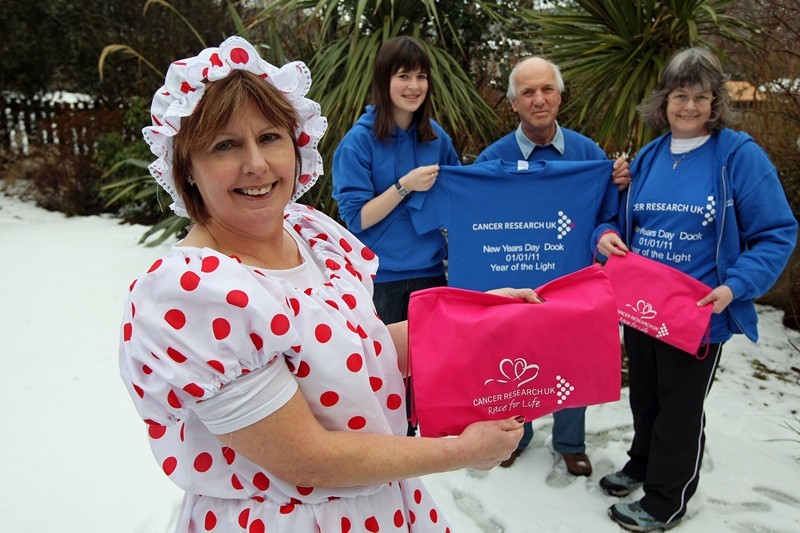Hardy souls participating in the New Year’s Day dook in Arbroath can be reassured about the quality of the water, even if the temperature causes concern, research has shown.
Despite the weather, many locals have signed up to start 2011 with a splash at the West Links with many pledging to take to the North Sea in fancy dress.
Bathing water quality is intricately linked to upstream land use and research by a consortium of scientists from Aberdeen’s Macaulay Land Use Research Institute (the Macaulay), SAC and Aberystwyth University have shown that simple on-farm measures can reduce contamination.
Bathing waters are an important asset to people in Scotland, both for tourism and recreation.
They are protected by the European Union’s Bathing Water Directives which require that water quality at all designated bathing waters meet stringent microbiological standards to protect the health of people who choose to bathe there.
The main objectives of the Bathing Water Directives are to protect public health and the environment from faecal pollution.
Member states are required to identify popular bathing areas and to monitor water quality throughout the bathing season.
Each year between early June and mid-September, the Scottish Environment Protection Agency (SEPA) monitors the quality of designated ‘bathing waters’ and makes this information available online and through a daily predictive sign system.
However, water quality standards are tightening from 2015 and there is pressure to extend the range of sites monitored for water quality so that other water uses such as surfing, kayaking, diving and other activities which are not restricted to the bathing water season are better covered.
Dr Andy Vinten, a principal researcher in catchment management and water quality from the Macaulay, said, “Bathing water quality in Scotland is improving thanks to investment in both sewage treatment and in improved livestock management to prevent faecal material entering water.
“Livestock obviously need access to drinking water, but unrestricted access to burns and rivers as well as the application of slurries and manures and the presence of feeders close to water can add faecal bacteria, which in turn can affect coastal bathing waters.”
He added, “Understanding waterborne transport and survival of faecal bacteria from farm sources is critical to assessing the risk to human health from recreational use of waters.”
